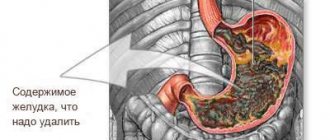Drug poisoning
Poisoning can occur as a result of using various medications. As a rule, this happens as a result of exceeding the permissible dosage. This can happen due to inattention, drug addiction, or with the intention of committing suicide.
Symptoms of drug poisoning include nausea and severe vomiting. Pale skin, fainting, elevated body temperature. The patient may experience auditory and visual hallucinations.
How long do adults stay in the hospital with jaundice?
how is jaundice transmitted?
Close people whose relatives have encountered jaundice are interested in how jaundice is transmitted from person to person. Moreover, among the majority there is a widespread belief that jaundice is a viral disease. But in reality this is just a symptom. In some cases, yellowness of the skin and whites of the eyes may be physiological, and not at all indicate any disease.
In medicine, jaundice is a phenomenon when, due to an excess of bilirubin, the skin turns jaundiced. Bilirubin is formed during the breakdown of red blood cells, processed by the liver and excreted through the gallbladder.
There are several main forms of jaundice:
- False - taking certain medications and eating foods rich in carotene, such as carrots, can cause yellowing of the skin not associated with bilirubin.
- Suprahepatic – associated with increased levels of bilirubin, the reason for this is increased destruction of red blood cells. This phenomenon is observed with blood loss, viruses, and leukemia.
- Hepatic – characterized by impaired liver function. It is a consequence of liver diseases such as cirrhosis, hepatitis, and can develop due to certain medications.
- Subhepatic - develops due to a lack of produced bilirubin, which is excreted from the liver and mixed with bile. It is a consequence of disruption of the gallbladder and bladder. This type of jaundice develops more often than others in adults.
Etiology of fatty food poisoning
The symptoms that characterize poisoning from spoiled food are known to many. Intoxication is accompanied by:
- feeling of nausea followed by vomiting;
- gastrointestinal disorder, presented in the form of abdominal cramps and loose stools (see Diarrhea due to poisoning);
- weakness and drowsiness;
- chills and slight fever;
- excessive gas formation;
- increased sweating.
In addition to the listed symptoms, the clinical picture of poisoning with fatty foods is supplemented by:
- feeling of discomfort in the area of the right hypochondrium;
- the presence of a bitter taste in the mouth;
- increased feeling of lethargy;
- the presence of bile in the vomit.
Algorithm for gastric lavage step by step
Consult your doctor
- Establish a trusting contact with the patient, then explain to him that he needs to actively breathe through his nose if gagging occurs.
- Obtain written consent for the procedure.
- Sit or lay the patient on his side (as shown in the video).
- Put the patient on an apron.
- Measure the probe and mark it.
- Liberally lubricate the sealed end of the probe, then begin insertion by placing it on the root of the patient’s tongue.
- Attach the funnel and begin rinsing as shown in the training video.
But performing the manipulation technically correctly is not enough. You must be able to calculate the permissible amount of liquid for rinsing. Traditionally, the patient’s body weight is taken as a basis, for each kilogram of which 7–10 ml of water is supposed to be consumed. If you take more water, the water may enter the intestines. As you understand, together with toxins and poisons from the stomach, which should not be allowed in case of poisoning.
There are also contraindications to gastric lavage. These include stenosis of the larynx and esophagus, burns of the pharynx, and decompensated conditions.
If a child's gastric lavage was performed, the parents should be explained that rest is necessary after the procedure. You should not strive to feed an exhausted child.
Sometimes gastric lavage is carried out with a thin probe through the nose. Placement of a nasogastric tube is a strictly medical manipulation. In the next video you can see how this is done.
Mushroom poisoning
loading…
It is important to know that there should be no mushroom poisoning in childhood, since mushrooms should not be given to a child under 16 years of age. His body, in particular the digestive system, is not yet ready to process such products, and therefore can cause rapid and intense intoxication with a fatal outcome.
As a rule, people poisoned by mushrooms end up in the intensive care unit of a hospital.
Doctors distinguish three main types of mushroom poisoning:
- Gastroenterotopic action: in this case, the intestines and stomach are affected. Poisoning is accompanied by vomiting and diarrhea, which appear within 30 minutes after taking mushrooms (false mushrooms, false mushrooms). With adequate therapy, treatment in intensive care lasts 2 days, and then in hospital for up to 10 more days.
- Neurotropic action: the pupils constrict, uncontrolled salivation, agitation and hallucinations begin. These manifestations begin 2-4 hours after eating mushrooms (fly agarics and the like). As a consequence, extensive damage to the central unequal system occurs. Respiratory arrest and death may occur. In intensive care for this type of poisoning, a person is treated for 2-3 days, and then in a hospital - at the discretion of the doctor, depending on the general condition of the patient’s body (up to 30 days).
- Hepatotrophic action: during the first 6 hours after eating mushrooms (pale toadstools) there are no signs of poisoning at all. And this in itself is a serious symptom. Extremely high risk of death. A person spends from 2 weeks to 2 months in a hospital hospital, including the intensive care unit. As a consequence of such human poisoning, complications develop in the form of chronic hepatitis, renal failure, and liver failure.
Botulism
Botulism develops quickly and intensively after consuming canned food, salted and dried fish contaminated with botulinum toxin. Symptoms may begin to appear within 2-3 hours, or only after two days. In this case, the victim weakens before the eyes, headaches, dry mouth, double vision, and decreased clarity of vision appear. The swallowing process becomes more difficult.
With a good outcome, a person spends up to one and a half months in a hospital hospital.
At its worst (and most common), botulism is fatal.
Hospital treatment
Based on the above information, it follows: poisoning with fatty foods, the treatment of which requires an individual approach, must be comprehensive. The determination of the method of therapy will depend on the disease that caused the extensive clinical picture. However, the main task of treatment is the same for all cases and is to eliminate the root cause of poisoning.
For example, cholelithiasis requires the use of pharmaceuticals that will help dissolve its products. Every year, many medications are being developed in this direction. If it is not possible to cope with the consequences of the disease using a conservative treatment method, specialists solve this problem surgically.
The elimination of dysfunction of the gallbladder and bile ducts is facilitated by antispasmodics and choleretic agents, the prescription of which is carried out only by a qualified specialist.
Blocking the inflammatory process of the pancreas is carried out with anti-enzyme drugs (Gordox, Contrikal), as well as by fasting, the rules of which should be familiarized to the gastroenterologist.
How many days is sick leave given for ARVI? Usually, with such an illness, no more than 5 days are given for recovery. This will be sufficient as most people make a full recovery during this period. If outpatient treatment is required due to an injury or complication, including after a visit to the dentist, sick leave will be issued for up to 10 days.
How many days of sick leave is given after surgery? Typically, inpatient treatment lasts up to 15 days, but it all depends on the patient’s condition. And this is determined on the basis of analyses. How many days of sick leave is given after the removal of a certain organ? The decision is made by a medical commission, so treatment is extended to 1 month. If an examination has been carried out, the period is 1 year.
There are often situations when a person unexpectedly enters a medical organization. Then the sick leave certificate is provided upon discharge, when other documents are also given.
Days spent in hospital are taken into account. Often, the patient needs to go to the doctor only on designated days, for example, to perform a dressing or examination.
Then the sheet is issued on the day of the specialist’s visit. The document will serve as proof of absence from work for a valid reason.
Most often, the first doctor consulted in such situations is a general practitioner. He is either called to the house or contacted during the appointment. The main task of the therapist is to determine what disease this person has in order to promptly refer him for the necessary research or to a more specialized specialist.
A timely collected medical history and a thorough examination of the sick person help the therapist.
Toxic infections
Toxic infections are a group of diseases that can be caused by a large number of different pathogenic microorganisms. They are all united by the similarity of the clinical picture. Usually the cause of the disease is the consumption of poor-quality food, as well as neglect of hygiene rules.
Most often, symptoms begin to appear within 6-10 hours, but there are cases when this happens earlier (up to 2 hours) or later (every other day). The onset of the disease is acute. The patient suddenly begins to feel nausea, pain in the abdomen and stomach. Vomiting and diarrhea soon follow. The pathology is dangerous because if it is not treated correctly or the symptoms are ignored, it can cause severe dehydration of the body. To prevent this, you should seek specialized help in a timely manner.
Often hospitalization for foodborne illnesses is not required; the disease goes away on its own within 3-5 days. The exceptions are small children and elderly people.
In infants and slightly older children, such poisoning can cause disturbances in all metabolic processes of the body, and profuse vomiting and diarrhea quickly remove water. Therefore, babies instantly reach a critical state, from which it is quite difficult to remove them. They also often develop neurotoxicosis.
How long can you stay on sick leave during pregnancy and childbirth?
The question of whether a gynecologist can give sick leave during pregnancy constantly comes up on forums for expectant mothers. Any disease that poses a threat to the baby (even indirectly) is the basis for issuing a certificate of incapacity for work - even with toxicosis they give sick leave. This is the main reason why employers do not like pregnant employees so much - they practically do not “get out” of sick leave.
Pregnant women should not only contact their gynecologist with complaints. For example, if you have sinusitis, you should go to an ENT specialist.
Pregnant employees may be issued a certificate of exemption from the day of conception. Such a document relieves the girl of the obligation to work in harmful conditions. In this case, the employee is still obliged to come to work on time and according to the staffing schedule.
How many days of sick leave is given when you need to leave work for a while due to pregnancy and childbirth? According to the rules, this period is 140 days. The sheet is provided at week 30, when the necessary examinations are completed and tests are taken. About 70 days are given before childbirth and 70 after. An increase in sick leave may be due to:
- gestation of 2 or more fetuses - 194 days are provided;
- in case of complications, an additional 16 days are given.
The question of whether a gynecologist can give sick leave during pregnancy constantly comes up on forums for expectant mothers. Any disease that poses a threat to the baby (even indirectly) is the basis for issuing a certificate of incapacity for work - even with toxicosis they give sick leave. This is the main reason why employers do not like pregnant employees so much - they practically do not “get out” of sick leave.
A pregnancy certificate can be issued by a paramedic, family doctor or antenatal clinic specialist. Women complete the necessary documentation at 30 weeks. The duration of the period on the certificate of incapacity for work lasts 140 days, and half of this period falls on the prenatal period.
A certificate of incapacity for work for allergies will be issued for a period of exacerbation of 5-7 days. The document will be closed at the slightest improvement.
For hemorrhoids
Diagnosis of jaundice
Diagnosis of jaundice
The cause of yellowing of the skin is determined using a number of studies:
- General analysis of urine and blood;
- Quantitative determination of bilirubin;
- Determination of liver enzyme levels;
- Stool analysis;
- Ultrasound, MRI, CT scan of the gallbladder, liver, spleen;
- Antibodies to viral hepatitis;
- Subject to a positive result of the last test, the viral load is determined using PCR diagnostics, which is used to determine whether hepatitis is contagious or not for people close to the patient.
Carbon monoxide
Carbon monoxide poisoning is one of the most common and dangerous household poisonings. They occur when a fire begins to occur in an enclosed space - an engine running in a garage, a stove burning with insufficient draft (see Exhaust gas poisoning). This intoxication is divided into three degrees - mild, moderate, severe. In the first case, the patient complains of heaviness and pain in the head, nausea, and sometimes vomiting. In more severe situations, failure of the respiratory and cardiac systems often develops. Hospitalization usually lasts 2-3 days, but in case of severe poisoning it can last longer.
First aid for food poisoning
To get rid of the remains of infected food, you need to give 1-2 glasses of water or a weak solution of soda (1 tablespoon of soda for 2 liters of water). You should not use potassium permanganate for such cases - in a hurry, you can make a mistake in preparing the solution and burn the gastric mucosa.
After drinking a sufficient amount of liquid, two fingers should be inserted as deep as possible into the oropharynx and moved. The procedure can be repeated several times. Attempts to induce vomiting should be made even against the wishes of the patient.
Sorbents include a group of medicines that can absorb harmful substances, including food toxins. One of the drugs with the highest adsorption capacity is activated carbon, which should always be in your home medicine cabinet.
The tablets should be crushed at the rate of 1 g per 1 kg of weight (single dose for acute poisoning), diluted with water and the resulting suspension should be drunk in small sips. It is important to know that activated carbon is difficult to overdose on, and if a person vomits after drinking activated carbon, you should immediately prepare and give him another portion of the suspension.
For its quick preparation, more convenient dosage forms of this sorbent are powders, granules and pastes.
Required Tools
- Gastric tube. This is a flexible tube up to 1.5 m long. In the video you saw it in the tray. The thickness of the tube sealed at one end is up to 12 mm.
- An adapter (rubber, glass) and another probe (to increase the length).
- Funnel with a capacity of 1 liter.
- Water bucket.
- Vaseline oil.
- Water at room temperature (up to 10 l).
- Large capacity for collecting rinsing water.
- Sterile containers for collecting wash water for analysis.
- Oilcloth aprons for the patient and for the health worker.
- Sterile material, gloves.
To perform gastric lavage in an unconscious patient, you may need a mouth dilator and a tongue holder.
The video demonstrates in detail how washing is carried out, but one important point is missed. This is to determine the correct length to which the probe is inserted. The straightened probe is applied with its sealed end to the earlobe and passed along the anterior wall of the chest to the end of the xiphoid process. Then make a mark on the probe with a marker. The mark means the length to which the lavage probe must be inserted so that it ends up in the stomach.
This point is very important, because all patients have different constitutions.
Types of intoxication
- food;
- medication, alcohol;
- carbon monoxide poisoning, lighting monoxide;
- poisoning with pesticides.
To understand how long a pathological condition will take, you need to know what types it comes in:
- food;
- acids, alkalis;
- sleeping pills, narcotic drugs;
- industrial toxins;
- alcoholic drinks;
- arsenic;
- carbon dioxide, lighting gases;
- intoxication with various insecticides.
Regardless of the type, when providing emergency assistance it is necessary to remove toxic elements from the victim’s body. After this, immediately go to the hospital for qualified treatment.
Poisoning in a child
To the question of whether sick leave is given in case of poisoning in an adult, the answer has been received. But what will happen if a child is intoxicated? In such a situation, the adult must receive sick leave for the entire period of the acute illness, if the child is under 7 years of age, both for outpatient and inpatient treatment.
At the age of 7-15 years, for a period of up to 15 days, unless, by decision of the medical commission, a longer period is not necessary. If the child’s age is over 15 years, then sick leave for poisoning of a child is given for outpatient treatment for 3 days, based on the decision of the commission, up to 7 days. The choice of treatment site will also depend entirely on the etiology of the toxic agent.
Conclusion
Thus, food poisoning requires the issuance of a sick leave certificate, but only in the presence of significant symptoms that deprive the patient of the ability to perform work. The period is determined by how the disease progresses, how quickly recovery occurs, the contagiousness of the patient himself and the duties that the patient must perform at work.
Remember that if you are really sick, not a single doctor will refuse to treat you or issue you a certificate of temporary incapacity for work.
Did you know that you can get poisoned from fruits? What fruits are dangerous?
Why people poison themselves with sausage, read here.
Conclusion
The benefits and harms of multicookers for human health
Tar soap is a godsend for human health
Why is it harmful for babies to watch TV?
Infrared sauna treatment
Factors on which the duration of anti-intoxication therapy depends
The length of stay in a hospital in case of poisoning of one type or another will be directly influenced by many other factors:
- Age of the victim.
- A history of chronic diseases.
- A history of hereditary diseases.
- Failure to comply with all doctor's recommendations and prescriptions.
- Dietary disorder.
Food poisoning: treatment at home
Severe intoxication
All types of severe forms of poisoning require seeking medical help and hospitalization for the entire period of therapeutic measures.
The severity of poisoning can be determined by the clinical picture. Severe poisoning manifests itself through:
- Constant and frequent vomiting;
- Intense diarrhea with blood in the stool;
- High body temperature;
- Convulsive syndrome, paralysis, drooling, visual impairment;
- Fainting;
- Reducing blood pressure to critical points;
- Suffocation;
- Changes in urine (visual and quantitative).
All this indicates that the person’s poisoning is severe and requires immediate medical attention. The length of hospitalization of the victim will depend on many factors:
- From the causative agent of poisoning and its reaction to drugs;
- From the individual characteristics of the human body4
- On the severity of damage to internal organs by toxins;
- From the amount of poison and toxins that have entered the body, and so on.
On average, a therapeutic course in a hospital inpatient unit can last from 5 to 15 days.
The most severe poisonings are considered to be mushroom intoxication, gas intoxication and botulism.
Help with botulism
Viral hepatitis
Hepatitis A
Viral hepatitis A is a disease with a fairly high risk of contracting. It is transmitted by the fecal-oral route, which implies the following routes of infection: consumption of unwashed vegetables and fruits, as well as contaminated water. Contrary to popular belief, it is not transmitted by airborne droplets. The incubation period of the disease is 15-45 days.
The symptoms of hepatitis A are not always clear; it happens that the disease periodically subsides, and then the symptoms increase. The most serious complications are diseases of the central nervous system and liver. Immunity to this type of hepatitis develops throughout life.
Hepatitis B
hepatitis B
Hepatitis B is also contagious, transmitted through human body fluids, most often through blood. This type has a unique property - high survival rate. It takes 60 days for the virus to die under room conditions. The sanitary standards that are observed in the hospital for disinfection are most often designed specifically for hepatitis B, as one of the most persistent infections. Due to these properties, there is a high probability of contracting an infection not only from blood transfusions and from the use of syringes by drug addicts, but also at the dentist or in the nail salon.
Unlike hepatitis C, type B has one more feature - it does not mutate. This quality made it possible to create a vaccine against this form, which is given very first at the birth of a child - on days 1-2 of life. It develops quite slowly and often becomes chronic. People with this form are forced to constantly take antiviral drugs.
Hepatitis C
Of the three types of hepatitis A, B, C, the latter is the most difficult to become infected with. However, due to the fact that it constantly mutates, there is no vaccine for it. It is transmitted through blood, but the likelihood of contracting it through unprotected sex is much lower than with hepatitis B.
There are several types and subtypes of the disease. You can even get several diseases at once. Further prognosis and therapy depend on the subtype. Different parts of the world have different subtypes. As with hepatitis B, hepatitis C becomes chronic in most cases.
Prevention of food poisoning
In order not to encounter the clinical picture of poisoning with fatty foods, you should again take preventive measures. These include:
- excess weight loss;
- consumption of low-calorie foods;
- maintaining water balance - you should drink at least 2 liters of fluid per day;
- reducing the portion size and increasing the frequency of meals (5-6 times a day);
- performing daily physical activity;
- rejection of bad habits.
Many people make mistakes in life, but not everyone knows how to draw the right conclusions. Therefore, in order to avoid future repetitions of such situations, you should follow simple rules:
- wash hands and food thoroughly before preparing and eating;
- do not buy food or eat in questionable places;
- keep the kitchen clean and know the technology for preparing various products;
- follow the rules and shelf life of prepared dishes.
All these nuances are the key to maintaining the health of your entire family!
The story about Zheppa
I recently read this post: Take care of your butt from a young age! and memories came flooding back, so much so that my tail hurt. This is my first post, so I apologize in advance. for all!
Prologue. About 6 years ago I worked on a rescue ship. It was an ordinary winter day. An order was received for our electric ship to stand alongside the decommissioned warship, moored to the pier for centuries, in order to inspect it for flooding and, if possible, prevent it from burying itself under thick ice. No sooner said than done. And now we are already moored in number two, and there is no one to take care of the ends of the warrior. But I was young, then still healthy, courage bordering on dementia, I decided, like a dashing pirate, to board the ship. I wrap the mooring end around my hand like Jack Sparrow (sorry, Captain Jack Sparrow). I jump from the side of my ship onto the deck of a warship. On the icy deck. The first thing I saw after the jump was the toes of my boots at face level, and then sparks from my eyes like in a steel mill. In general, I landed on my tailbone. Somehow throwing the slag on the bollard, holding my lower back, I continued my workday. If only I knew then that this useless agility would cost me 2 operations and a total of eight months of incapacity.
Start. In the spring, about two months later, after another daily watch, I go to rest in the cabin. Until that night, I no longer remembered that reckless jump, but the consequences thundered like thunder from a clear sky. I wake up with pain in the lower back and tailbone area. Having briefly examined myself in the middle of the night, I decided that I simply slept uncomfortably and my back was stiff. In the morning the pain does not go away and only increases. Now it’s difficult to bend, sit down, stand up, or even move your legs at all, everything goes to the lower back and below. I work the day, hoping that I just lay down. The next morning everything is even worse and more painful. But my day shift has begun and I decide to wait another day and in the evening go to warm up my lower back in the ship’s sauna. On the third day, my legs stopped moving normally. At this point I began to suspect that something was wrong and went to the surgeon. The road from the port to the nearest clinic under normal conditions takes about 40 minutes. I walked for all of 3 hours. A young girl surgeon unceremoniously put me on the couch, ordered me to take off my trousers and began to examine my lower back, coccyx and the space between the buns. Then kind but cold gloved hands began to penetrate my holy of holies. Gritting my teeth, no longer from pain, but from embarrassment, I watched her in the reflection of the window, like a hidden tiger. Then she asks how long have I had a fistula on my tailbone? In response, the tiger blinks and does not understand what he is being asked about. Taking a knitting needle, she poked it into the fistula like a poker in a stove and pulled it out, covered in pus. Not only did I develop a fistula from winter piracy, but it also festered and a cyst formed. The surgeon explained to me that I needed to operate urgently and do it according to registration, because... I never understood why. Having reached the ship and written a sick leave application, I collected some things and went to my hometown. Fortunately, it was only 250 km from the location of the ship, but I remembered this road for the rest of my life. It was unbearable to sit, so I sat on outstretched arms without creating a fulcrum with my fifth point. I cursed everything! I cursed the winding roads, I cursed the potholes and stones on them, I cursed the officials who are responsible for road repairs. Along the way, an idea even arose to break the tailbone of negligent officials and let them ride minibuses on their own roads. In general, I got to my parents’ house with tears in my eyes. I spent the night and went to the hospital on unruly legs. The surgeon, after examining me and reading an explanatory note from his colleague from a neighboring city, loudly announced - we will open it up! And then everything is like in a trailer for a movie about doctors. The tiles of the operating room, the cold couch, the surgeon in a mask with an instrument in his hands, an injection into a bun, an incision, a nurse giving a blow job, but not for me, although continue, more cotton wool, we’ll sew it up. Everything happened so quickly that I didn’t even understand anything. But this was not a solution to the problem, they only removed the pus and relieved the inflammation. The cyst had to be literally dug out of me. Therefore, I was given time of 2 months for the incision on the tailbone to heal, and I collected all the necessary tests and signed up for a planned operation.
Second operation. Summer has come. From the moment I left the ship, I did not appear there. The first month I lay on my stomach and listened to my ass heal. On the second, I began to collect tests and directions, simultaneously moving forward in line to see the surgeon. And then the X-day came. Having collected the essentials for the ward, I arrived at the hospital, where I was placed in a room with a man who was always reading the newspaper and a homeless man with failing kidneys, stuck with tubes like Neo in a matrix capsule. On the second day of staying next to the chosen one, they wrapped an elastic bandage around my legs, like white stockings, and sent me with a nurse to shave my bikini and between my butts. And again the hidden tiger visited me when the nurse moved the razor dangerously close to my not so distant places. Not only was I afraid to move, I couldn’t even breathe! Oh, this is a mixed feeling when your Admiralty spire is in the hands of a woman with a razor. The operation began on the morning of the third day. Naked, in white stockings and a pillowcase covering the mowed back yard, I was taken through the entire department to the operating room. The people in the corridor, seeing the gurney and the naked body on it, rolling into the operating room, had flashbacks of their experience in their eyes. In the operating room, a kind anastasiologist injected spinal anesthesia into my spine and after a few minutes I began to feel the absence of my legs. It’s a funny feeling, up to the waist I’m there, but everything below is like another person. The surgeon came. I injected a dye solution into the fistula in order to tint the channels of the cyst and see what to drip and where. And then, looking into the kind eyes of the anastasiologist, I smelled the smell (of napalm in the morning) of burnt flesh. Looking over my shoulder, I saw the crater of my volcano smoking, and the doctor, like a turner, was burning my sore with a laser (his initials) and periodically scooping out shavings from there. Having decided that I had seen enough, I spent the remaining time of the operation talking with the anastasiologist about food and favorite dishes, fortunately the smell of fried meat was present. The operation ended and the nurse began to tighten the burnt crater with only three zip ties. As it was later explained to me, in order to grow meat, start from the bottom, while everything is open on the outside. The surgeon also said that the cyst tunnels reached the spine and penetrated deep into it. He dug everything up to the spine, but didn’t go into the bone, so when it’s overgrown, I’ll take care of my ass like the apple of my eye. Do not freeze, do not strain, do not hit, so that there is no relapse. And here I am again lying in the room with Neo and waiting for my legs to return, because I want to smoke like crazy. I was strictly forbidden to get up after spinal anesthesia for 24 hours. And drink a lot of water. But, if you remember that at that time my courage bordered on dementia, then you can easily imagine what I did as soon as I began to feel my legs. That's right, I propped myself up with my arms and legs on the headboards of the bed, without bending my back or straining the remains of my tailbone, got up and climbed onto the windowsill, taking with me the previously hidden pack of cigarettes. Fortunately, the anesthesia had not completely worn off yet, so I didn’t feel any pain. For this reason, I felt the blissful taste of a cigarette, standing on the windowsill, with my head in the window, naked and with an open spine in the lumbar region. As soon as he climbed in, he climbed down, carefully, without disturbing his stomach, lay down and fell asleep contentedly. And in the morning such headaches began that the terrible Moscow migraines would seem like a mild malaise. Even raising my head from the pillow I felt the entire cranium being compressed by two hydraulic presses. The pain was unbearable, but I silently accepted it as punishment for my climbing on the windowsills. Well, I was afraid that they would open me up and take away my cigarettes. I lay in the ward in a loincloth for a week. There were only two entertainments. The first is a trip through two buildings onto the street to the smoking room for doctors. It took me about an hour to get there at a duck's pace, holding on to everything I could. And an hour back. And that’s 2 hours for a walk. And by the time you come back, you’ll want to smoke again. And the second entertainment is going to the toilet. Ooooh yeah. What did the author of the post from which my memories write? Standing like a horse? And how about the kangaroo? That's for sure. Yes, in the most severe storms I managed to do this much more elegantly, gracefully and accurately than then standing. Every time I went to the toilet, I imagined myself as an American bomber, dropping its deadly cargo over the clouds from medical pajamas onto the head of a German plumber. A week after the operation, I was discharged and sent home. Have you ever ridden in a taxi lying down in the back seat with your legs bent up and your palms under your chin? They would give me a pink corded phone and the gossip girl from American sitcoms would fly out.
Epilogue. It took me 6 months to heal and grow meat. At first, I went to the clinic 3 times a week for bandages, like a duck, barely moving my legs. The hole to the spine did not heal completely, even when he returned to his ship and continued to plow the seas. She continued to constantly get wet and exude ichor. It finally healed only in November, when the doctor inserted a piece of rubber glove into my non-healing hole, in the form of a plug.
And so, the conclusion: Don’t be a hero, go to the doctors on time, follow the doctors’ instructions, quit smoking and in general, be friends with your head, maybe with someone else’s, if you’re not at peace with your own.
R.S. I would like to apologize once again for everything: for the story being too long, for the spelling and especially for the punctuation, for the inept construction of thoughts and text as a whole. This is my first post, this is my first time. Be gentle with me =)
Mild intoxication
Mild intoxications include food and alcohol.
Most often, they all end quickly and do not require not only hospitalization, but even medical care.
Mild poisoning is accompanied by mild stool upset and single vomiting. In this case, the body temperature usually does not increase. And all negative signs disappear within 2-3 days.
After mild intoxication, the greatest medical recommendation is dietary nutrition, not strict, for two weeks after stabilization of the condition.
This is necessary to restore the natural intestinal microflora and support the stomach.
Mild poisoning, as a rule, can be caused by eating unwashed fruits or vegetables, not fresh lactic acid products, or a single dose of alcohol.
If there is even mild food poisoning in an infant, it is important and necessary to consult a doctor. In this case, hospitalization may even be prescribed. But, as a rule, it lasts no more than three days.
For mild alcohol poisoning, hospitalization is not required, but infusion therapy may be required, which is carried out exclusively by qualified medical personnel.
How to receive compensation from the restaurant administration
Partial compensation can be received from the administration of the establishment. Litigation is not profitable for owners, and they can return the amount of the bill, compensate for treatment, lost earnings and moral damages.
Write a complaint to the cafe administration. It is written in any form, indicating all the data: when it happened, what was ordered, when you felt unwell, what diagnosis the doctor made. Indicate the amount you should be reimbursed and attach copies of the invoice, receipt, medical report, receipts for medications and a certificate from your place of employment.
The claim must be sent by registered mail with notification to the legal address of the restaurant.
The restaurant administration is obliged to respond to the complaint within 10 days from the date of receipt of the complaint. If no response is received or the administration refuses to reimburse expenses, go to court.
You can fill out the claim form yourself.
Sample of filling out a claim
How is food poisoning different from other types?
Any food poisoning, or rather its symptoms and severity, directly depend on the type of pathogen or toxic substance ingested with food. But in any case, the cause of poisoning is poor quality food.
The duration of such poisoning will depend on the amount of spoiled product eaten, as well as on the chosen treatment methods.
Food poisoning is distinguished from other types of intoxication by the following signs or factors:
- Mass character (after all, as a rule, poor-quality food is consumed not by one person, but by several at once).
- Abrupt onset of the disease (as a rule, food poisoning immediately begins with sharp pain in the abdomen).
- The cause of poisoning is one product consumed during meals by all family members or in one establishment (cafe, restaurant, canteen).
- Rapid course (food intoxication, as a rule, is fleeting).
- Favorable prognosis (all food poisoning usually ends in complete recovery, but the only exception may be botulism).
In addition, all types of intoxication can be classified according to the severity of their course into mild and severe.
Transmission mechanisms
To unambiguously answer whether jaundice is transmitted, and in what way, it is necessary to consider in detail some of the diseases of which it is a symptom.
The penultimate type is subhepatic jaundice, also called physiological or mechanical. It occurs against the background of disorders of the biliary tract. This condition can occur in the presence of stones in the urinary or gall bladder, cancer of the biliary tract, etc. Thus, such a condition is not contagious and cannot be transmitted from person to person.
Separately, it should be considered when the cause of liver disease is an infectious case - viral hepatitis. Knowledge about the methods of transmission of jaundice caused by the hepatitis virus will help reduce the risk of contracting the disease. There are several types of viral hepatitis, the most common of which are types A, B, C.
Mushroom poisoning
The consumption of mushrooms is contraindicated for children under 14 years of age. This is due to the fact that their body does not yet produce certain enzymes that can digest mushrooms. If a small child eats mushrooms, this will have a rather negative impact on his body. And if it was also toadstools, then, most likely, one should expect a fatal outcome (see Toadstool poisoning). Only timely and qualified assistance can help here.
Read whether you can be poisoned by pickled mushrooms: causes, symptoms, help.
Find out how to provide first aid for mushroom poisoning and save a person’s life.
How long they will be kept in the hospital for mushroom poisoning depends on the type of poison, the amount of food eaten and the patient’s health condition. Doctors distinguish three groups of mushroom intoxications:
- Gastroenterotropic poisoning - this type most often occurs due to the consumption of false mushrooms or butter mushrooms (see Poisoning with butter mushrooms). Damage to the intestines and stomach develops. Half an hour after eating, a person feels nauseous, and over time, diarrhea and severe vomiting occur. Usually, with such poisoning, the victim is treated in intensive care for two days, and then he is transferred to the infectious diseases department, where he will remain until the symptoms completely disappear, plus several days for the body to get stronger.
- Neurotropic intoxication – damage to the central and peripheral nervous system. The clinical picture begins to appear 2-6 hours after eating mushrooms, most often fly agaric mushrooms. The person experiences hallucinations and is in a state of excitement. Upon examination, constricted pupils can be detected. In this case, death occurs due to respiratory arrest. To get out of this state you will have to spend 2-3 days in intensive care. The time that the patient will be kept in the infectious diseases hospital is not limited. The decision on discharge to dispensary registration is made based on the results of analyzes and survey data.
- Hepatotrophic poisoning occurs when eating toadstool. This is one of the most severe types of mushroom intoxication. Symptoms begin to manifest themselves clearly 8-12 hours after eating; if the body is silent for the first 6 hours, this is a bad sign. In such cases, the mortality rate is 20-40%. The treatment is quite long. It will take at least two weeks, but sometimes it can take up to two months. This poisoning is characterized by the presence of complications - liver failure, hepatitis, cirrhosis.
Botulinum toxin
Botulism is an infectious disease that severely affects the nervous system. You can become infected with it by consuming foods that contain clostridium botulism. Most often these are canned food, dried or salted fish, and drinking water.
The clinical picture begins to appear at different times in different people. This can happen within a few hours, or maybe 3-4 days after eating low-quality food. The victim will complain of decreased vision, severe weakness, increased fatigue, and headache. Double vision may occur. Soon after the onset of symptoms, dysphagia develops—the person has difficulty swallowing.
How many days to stay in the hospital for botulinum toxin poisoning is decided in each case individually. But the treatment is long, on average it takes 1-2 months. And even after the symptoms disappear, the patient cannot be called completely healthy. He will have to follow a diet and gentle physical activity for quite some time.











